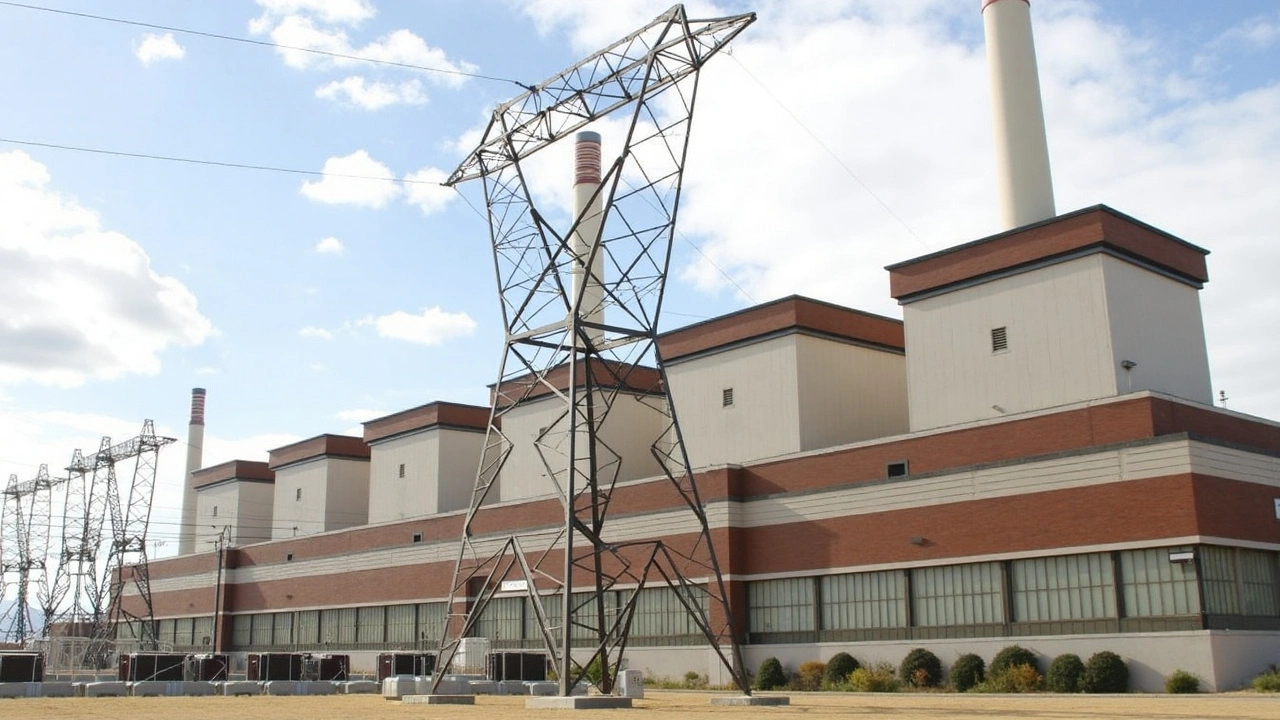Eskom, the pivotal power utility of South Africa, has missed its crucial goal of maintaining 365 consecutive days without loadshedding. This setback significantly underscores the persisting energy challenges that have sinned South Africa's socio-economic development over the years. The issue of loadshedding, or planned power outages, isn't a new phenomenon for South Africans. It's an ongoing struggle that affects both residential living and the broader industrial and economic activities of the nation. The aim was ambitious but necessary, as the whole country pins its hopes on Eskom’s ability to supply uninterrupted power, a service fundamental to modern living.
The chronic loadshedding South Africa experiences stems from a multifaceted problem. At the heart is Eskom's constellation of aging power plants, many of which operate beyond their design life. Infrastructure degradation, lack of timely maintenance, and insufficient investment in new technologies further compound the problem. Since these power plants can't reliably operate at full capacity continuously, Eskom is forced to employ loadshedding as a tactical measure to balance supply and demand and to forestall a complete collapse of the national grid. Although counterintuitive, loadshedding is employed to avert much more severe outcomes—ensuring that while some are temporarily left in the dark, others still have power.
In its quest to end loadshedding, Eskom initiated structural improvements aimed at revamping its generation fleet. These efforts were expected to bolster its capacity for electricity generation significantly, with the hope of maintaining consistent supplies. This progress was evidenced by a long stretch where loadshedding was minimized, momentarily yielding a glimpse of normalcy for South Africans. Furthermore, Eskom embarked on various projects focusing on different energy solutions, like renewable energy integration, to diversify its energy mix and reduce the over-reliance on coal-fired power stations.
However, despite all these proactive measures, the company issued an urgent loadshedding alert on January 31, 2025. This ominous announcement came just hours after the National Energy Regulator of South Africa (Nersa) sanctioned a tariff hike for Eskom. But notably, Nersa's approved increment was substantially below Eskom's original request, potentially affecting its revenue streams crucial for sustained investment in infrastructure and technology improvements. This decision underscores the intense negotiation balancing act between Eskom's operational needs and the economic realities faced by South African citizens who are already distressed by rising living costs.

The persistence of loadshedding isn’t merely a power issue—its ramifications ripple through the economic fabric of the country. Frequent power outages disrupt industrial productivity, increase operational costs, and may even stymie foreign investment. Unpredictability in power availability means that businesses, particularly those that are energy-intensive, must constantly navigate operational challenges. This unpredictability may keep potential investors wary, slowing the economic growth vital for a country striving to overcome high unemployment and other socio-economic pitfalls.
From a household perspective, loadshedding affects daily life realities, from inconsistent meal preparations to affecting home-based workforces heavily reliant on stable internet and power supply for productivity. The stratification that appears between those who can afford alternative power solutions, such as generators or solar panels, and those who cannot is stark. Energy poverty remains a critical societal concern, amplifying the socio-economic divide prevalent in the country.
| Year | Loadshedding Days | Consequences |
|---|---|---|
| 2020 | 54 | Increased operational costs for businesses |
| 2021 | 101 | Major disruptions in industrial operations |
| 2022 | 200 | Further economic strains and public discontent |
| 2023 | 250+ | Severe impacts on productivity and daily living |
Despite the entry into loadshedding on January 31st, Eskom remains optimistic about the future landscape of power in South Africa. The reported risk of loadshedding is perceived as potentially temporary; however, optimism must be grounded in actionable strategies that align with both immediate needs and long-term sustainability. Transformational change is imperative, with a focus on leveraging technology, increasing transparency and accountability, and fostering partnerships that nurture a holistic approach to solving Eskom's woes.
This optimistic vision aligns with global trends where energy diversification is treated not merely as an option, but as an inevitable path for attaining energy security. Consequently, embracing renewable energy sources, while reinforcing the existing grid infrastructure, should form the backbone of Eskom's strategic trajectory. It embodies a paradigm shift that acknowledges the realities of climate change and dwindling non-renewable resources, while also driving job creation in emerging energy sectors.

Eskom's trials reflect a microcosm of broader national issues that call for urgent, integrated, and innovative solutions. These dilemmas require a united front of public policy-makers, private industry stakeholders, and the community to work towards common goals. Critical to achieving success is the support of legislation and policy that facilitates an environment for change—one that promotes collaboration and encourages investments in energy solutions that are both scalable and sustainable.
Addressing Eskom's challenge also means evaluating and amending the policies that govern energy pricing, incentivizing decentralized energy solutions, and prioritizing the resultant social benefits. Such measures empower communities by increasing access to reliable and affordable energy, pivotal in the pursuit of an inclusive future for all South Africans. The energy landscape of South Africa embarks on a rugged journey towards stability, with Eskom steering its legacy through turbulent times.
Write a comment